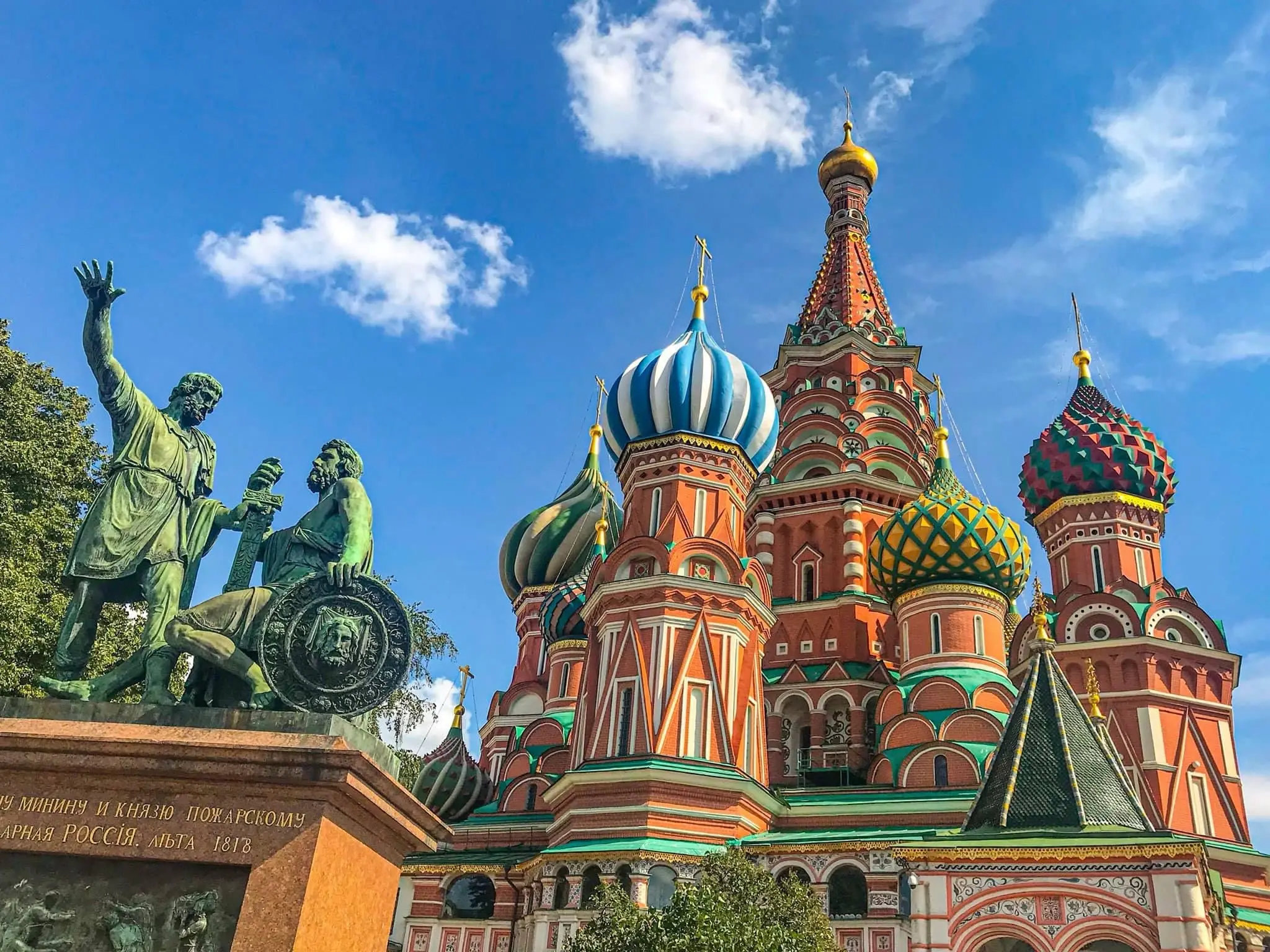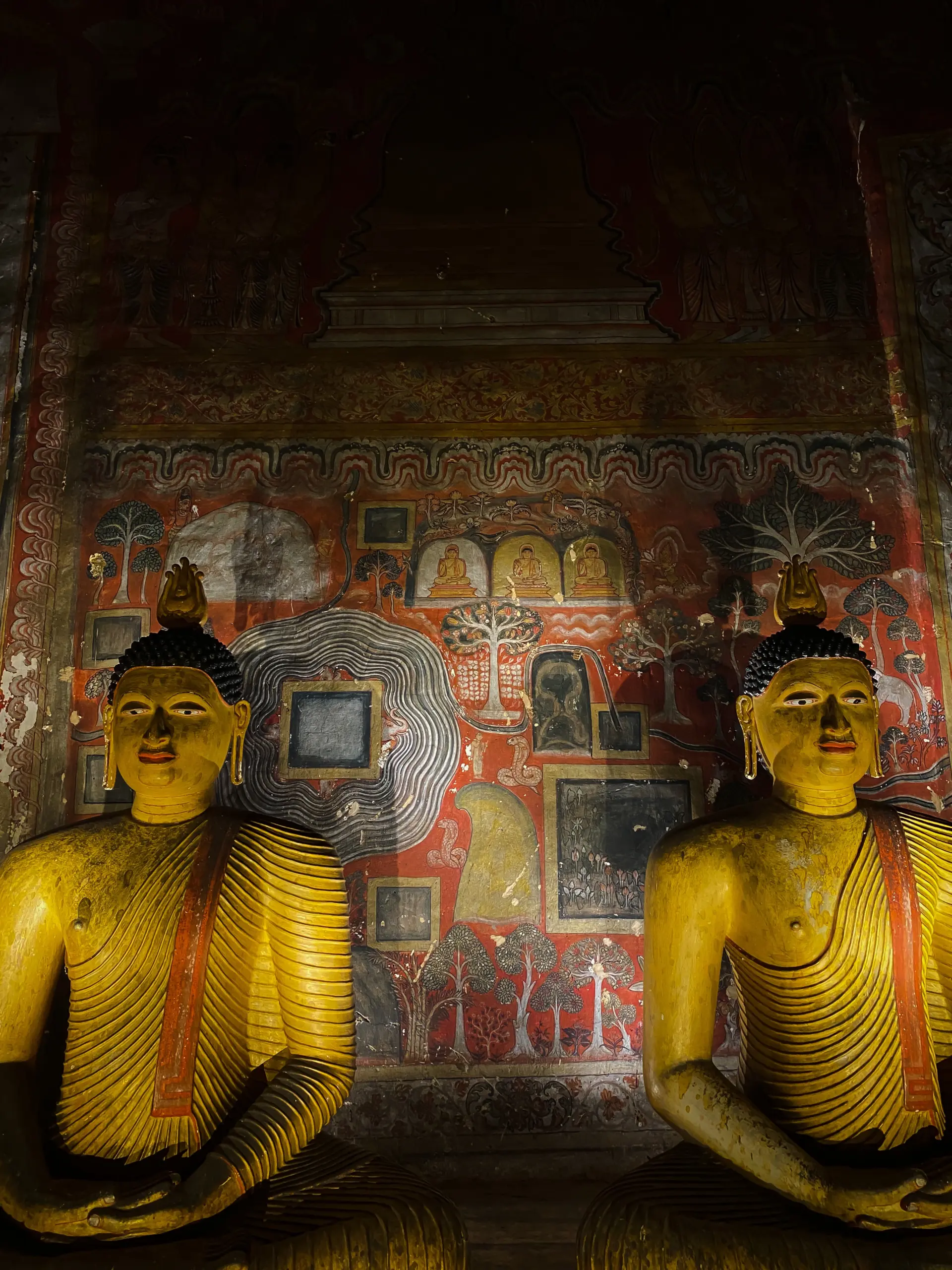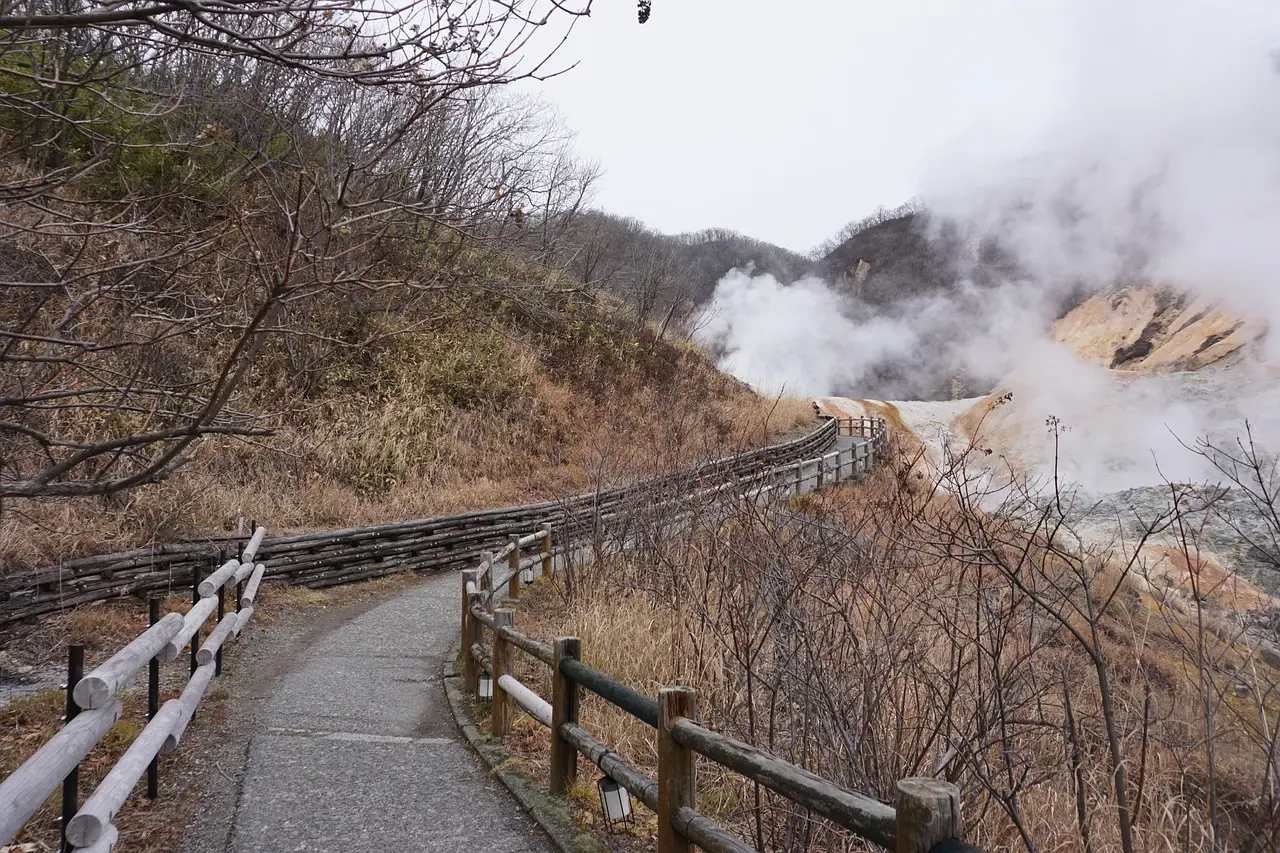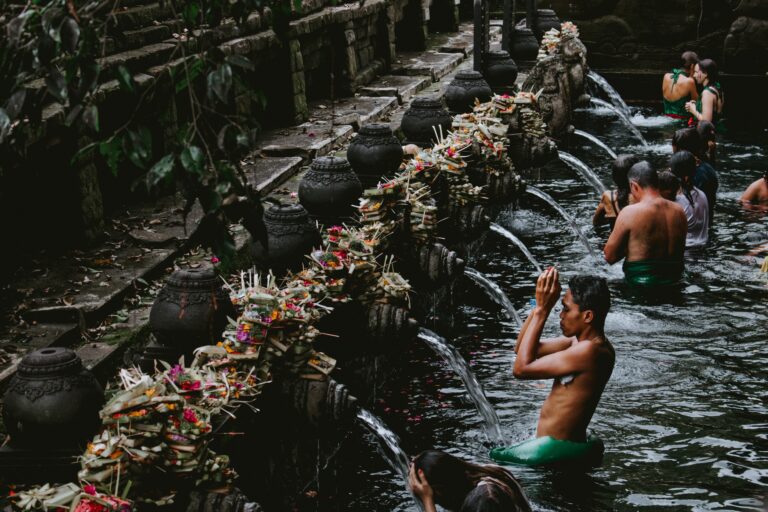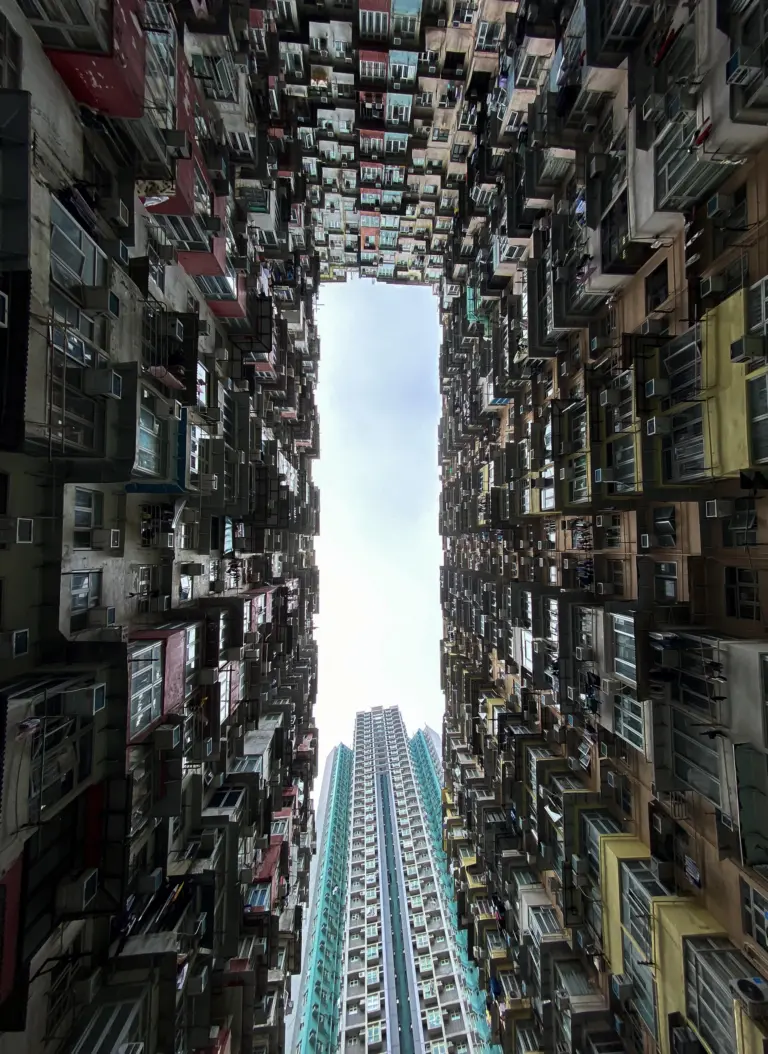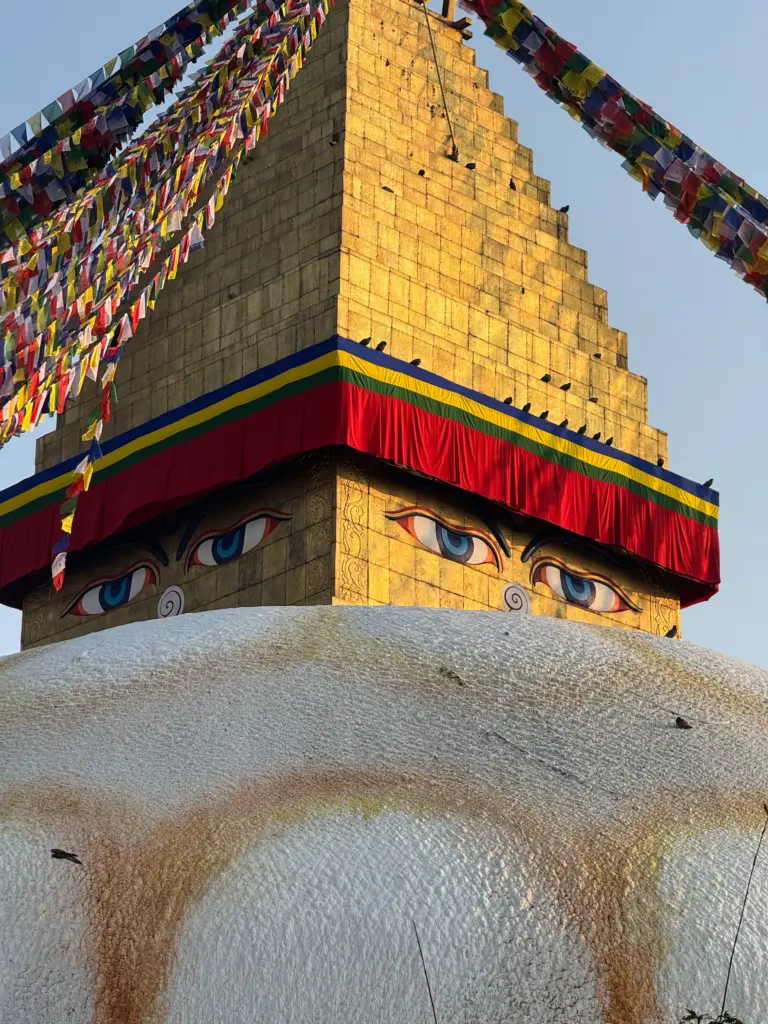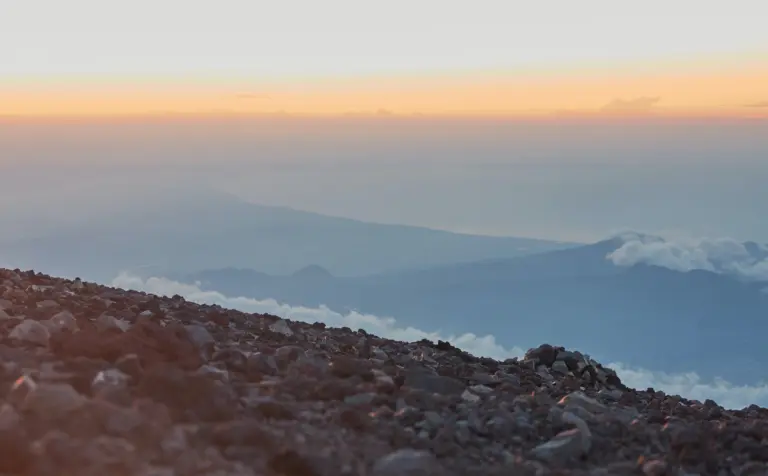Bangkok, the vibrant capital city of Thailand, never ceases to amaze me. With its rich culture, delicious street food, and countless adventures waiting around every corner, it’s a true feast for the senses! Not to mention, it’s a really great city to unwind, treating yourself to Thai massage after a day of walking and having nights swimming under the stars, no wonder it’s earned its name as the “Backpacker’s Paradise.”
We spent a couple of days in Bangkok before going to Chiang Rai and temple-hopping was something we particularly enjoyed doing. And no, it was pretty difficult to get “temple-sick” as each one was so unique, I was constantly left in awe. The Temple of Dawn, Wat Arun, stands out as a true gem, it was truly one-of-a-kind with its white towering spires that seem to glow in the sunlight.
In this article, we’ll be going through everything you need to know before you make your way to Bangkok. From the city’s history, Thai culture, the best places, things to do and even some hidden gems in between, I’m sure you’ll find some inspiration as you read along!
Table of Contents
Toggle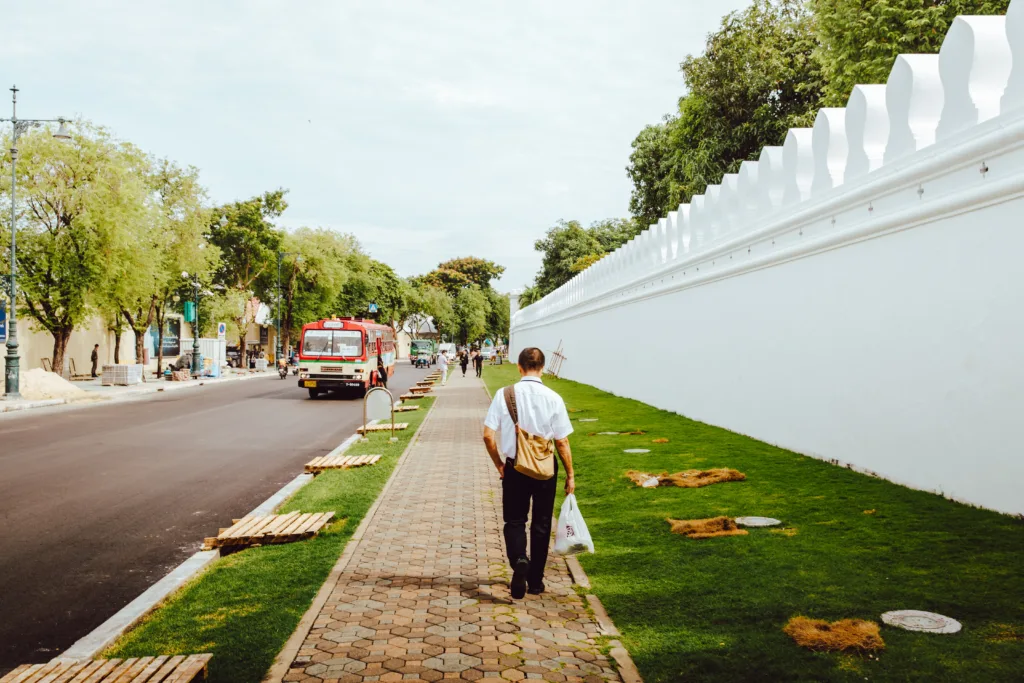
History of Bangkok
Bangkok has a history that dates back over 200 years. Originally a small trading post known as “Bang Makok,” the city soon became an important center of commerce and culture under the rule of King Rama I, the founder of the Chakri Dynasty. (The kings of Thailand are traditionally named after Lord Rama from the ancient Indian epic, Ramayana. The current king of Thailand is known as Rama X.)
In 1782, King Rama I moved the capital of Thailand from Thonburi to Bangkok, and the city quickly grew in size. During the 19th century, Bangkok became a hub for international trade and a melting pot of different cultures, with Chinese, Indian, Malay, and European influences all leaving their mark on the city.
During the 19th century, Bangkok underwent a period of modernization under King Rama IV, who introduced new infrastructure to the city such as the first railway line in Thailand.
In the early 20th century, Bangkok had its rennaisance period as it became a center of political activism and intellectual thought, with many Thai scholars using the city as a base to advocate for social reform. However, the country’s political landscape remained unstable, and in 1932 a bloodless coup led to the establishment of a constitutional monarchy.
During World War II, Bangkok was occupied by Japanese forces, who used the city as a base for their operations in Southeast Asia. After the war, Bangkok underwent a period of rapid growth and expansion, as Thailand embraced modernization.
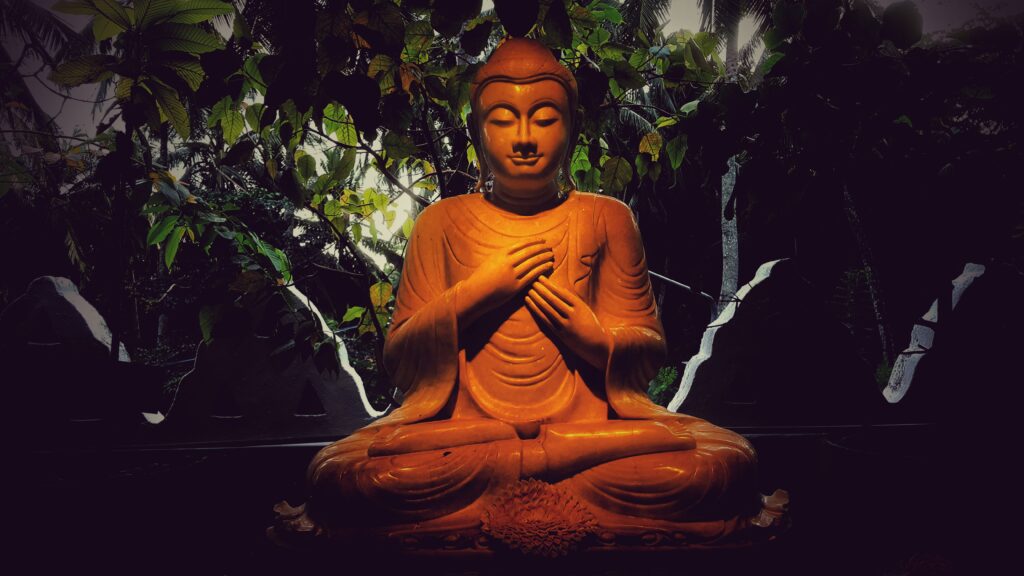
Thai Culture Overview
One of the most prominent aspects of Thai culture is the influence of Theravada Buddhism, which has played a central role in shaping Thai society for over a thousand years. The vast majority of Thais are Buddhists, and Buddhist teachings and practices are deeply ingrained in daily life which you can easily tell by simply walking around neighborhoods.
Though there is some religious syncretism happening as well as you will also see Ganesha, the elephant god from Hinduism. I found it is often the case for Buddhist countries with a large elephant population (such as Sri Lanka) to also have Ganesha.
The temples, also known as wat, are found in every corner of the country, and are often ornately decorated with intricate carvings and colorful murals.
Another important aspect of Thai culture is the concept of sanuk, or fun. Thais are known for their love of humor, playfulness, and socializing, and many aspects of Thai culture reflect this. Which is why Thailand also goes by another name: “The Land of Smiles.”
If you’re interested in learning more about Thai culture, be sure to check out my blog post that delves deeper into the traditions, customs, and beliefs that make Thailand such a unique country.
Best Places to Visit in Bangkok
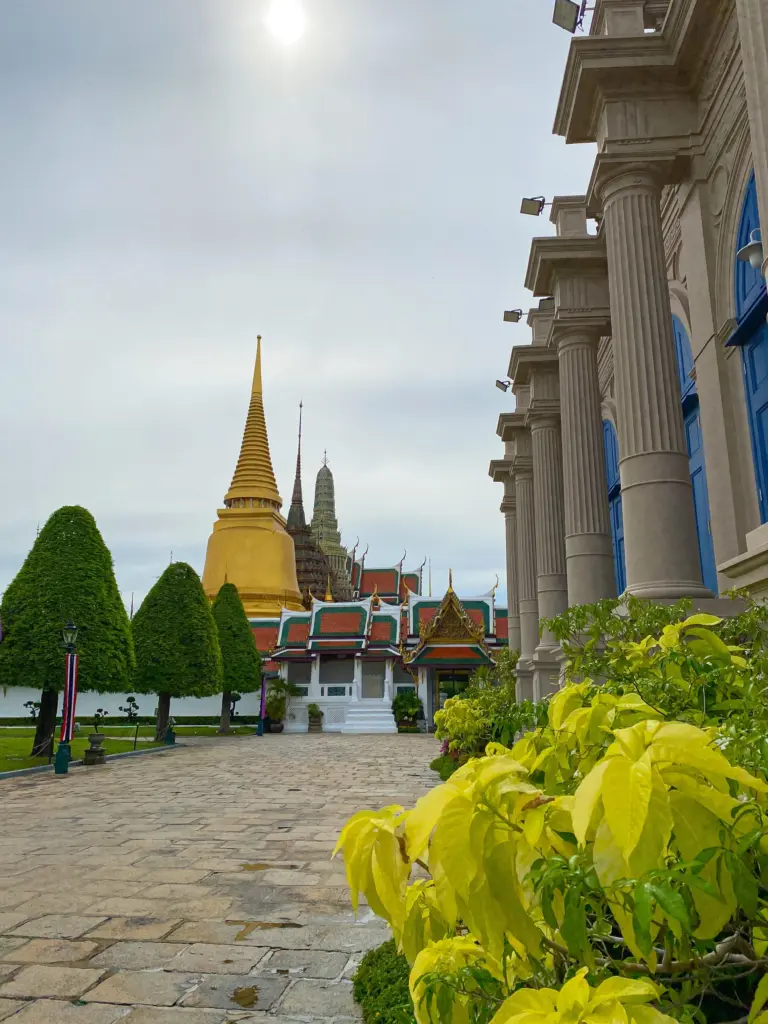
1. The Grand Palace
The Grand Palace is one of the most iconic landmarks in Bangkok (and the most expensive for us!)
Built in 1782, the palace served as the official residence of the kings of Thailand for over 150 years. The palace complex is home to a number of stunning buildings and temples, including the famous Wat Phra Kaew.
One of the most fascinating aspects of the Grand Palace is its connection to the Ramayana, an epic Hindu epic that tells the story of Prince Rama and his quest to rescue his wife Sita from the demon king Ravana. It’s an amazing story that will no doubt make your trip to Thailand much more immersive. If you want to learn more about it, you can find my blog post on it here.
The Ramayana has had a significant influence on Thai culture, and is often depicted in Thai art, architecture and theatre. The walls of the Grand Palace are adorned with intricate murals depicting scenes from the Ramayana, and many of the buildings and temples within the complex are named after characters from the epic.
Cost: 500 THB (15 USD)
2. Wat Phra Kaew (Temple of the Emerald Buddha)
Wat Phra Kaew, also known as the Temple of the Emerald Buddha, is one of the most significant spiritual sites in Thailand and is located within the grounds of the Grand Palace. One interesting fact about Wat Phra Kaew is that the temple was actually built to house the Emerald Buddha, rather than the other way around.
The temple is home to the famous Emerald Buddha, a highly revered statue of the Buddha that is carved from a single piece of jade. The statue has a very long history and was moved several times all throughout, coming from Vientiane in Laos, where it was kept for over 200 years all the way to its current location within the Grand Palace in 1784.
The Emerald Buddha is considered to be the most important religious artifact in Thailand and is believed to bring good fortune and prosperity to the country. The statue is dressed in a different set of robes for each season, and the changing of the robes is considered to be one of the most important rituals in Thai Buddhism.
Cost: Included in the Grand Palace ticket
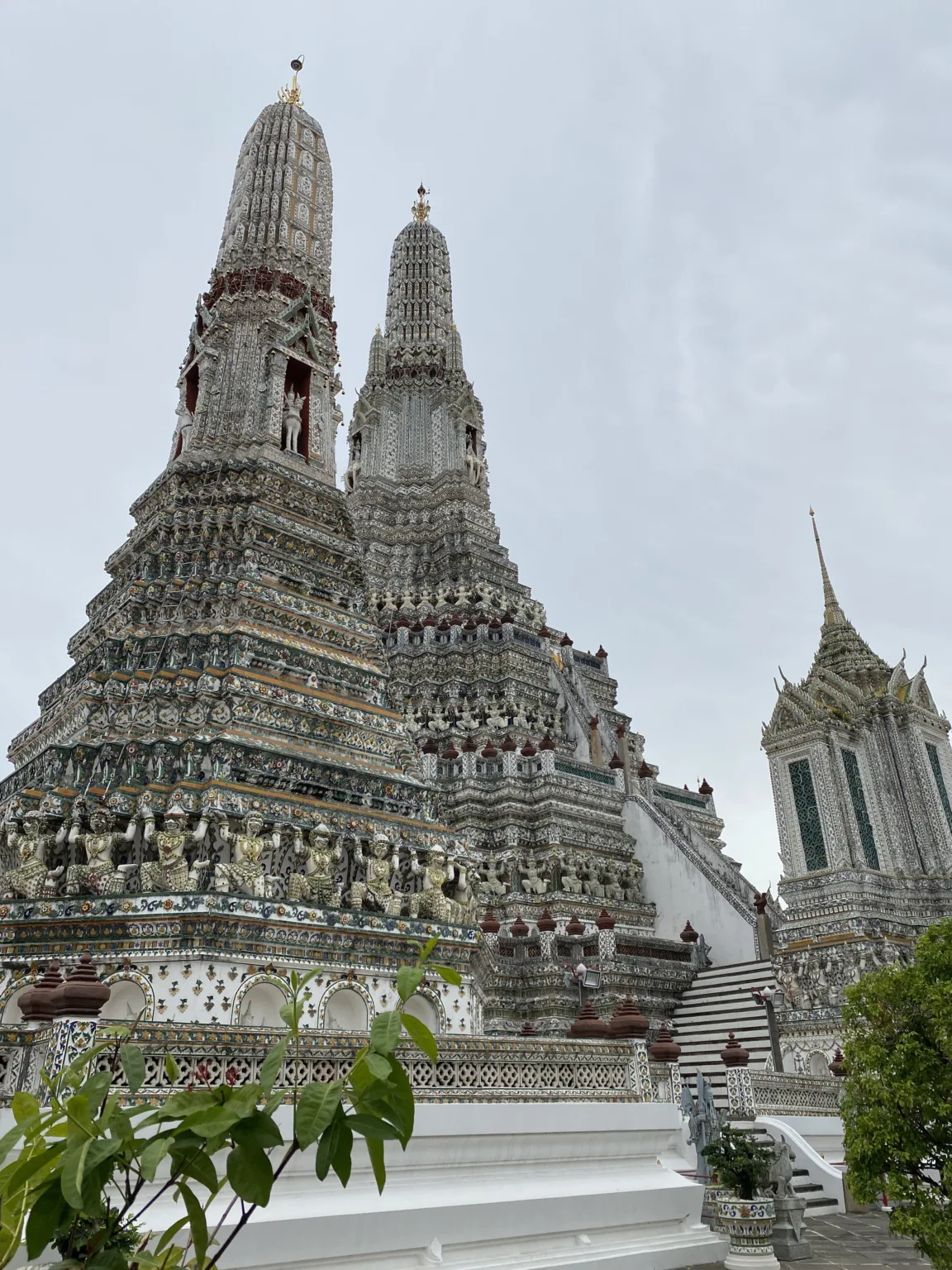
3. Wat Arun (Temple of Dawn)
Wat Arun was easily the highlight for me. We were quite lucky to have gone early in the morning and were able to have it all to ourselves! Needless to say, the experience was nothing short of magical.
The temple is located on the west bank of the Chao Phraya River and you have to take a small boat to get across.
The temple’s central feature is a towering spire, known as a prang, which is covered in colorful pieces of Chinese porcelain and seashells. The prang is surrounded by smaller spires that are decorated with statues of mythical beings, try to spot the Indra‘s 3-headed elephant, Erawan!
The temple was originally named Wat Makok, but it was later renamed Wat Arun after the charioteer of the Surya (sun god), Aruna who is often depicted as riding a chariot pulled by seven horses. You can also find the green statue of Thotsakan, the main antagonist of the Thai epic, Ramakien.
Cost: 100 THB (3 USD)
4. Yaowarat (Chinatown)
Thailand’s very own Chinatown is known for its lively street markets, delicious food, and a special blend of Thai-meets-Chinese architecture.
The Yaowarat street food scene is considered to be some of the best in Bangkok! Here, you can sample a wide variety of Chinese and Thai dishes, including dim sum, noodles, grilled meats, and fresh seafood. Many of the street vendors have been in business for generations and have perfected their craft over decades of experience.
One of the most famous temples in the area is the Chinese temple, Wat Mangkon Kamalawat (Wat Leng Noei Yi), known for its Chinese-style architecture which provides a great contrast against the rest of the other Thai temples in the area.
Cost: Free for both Chinatown and Wat Leng Noei Yi
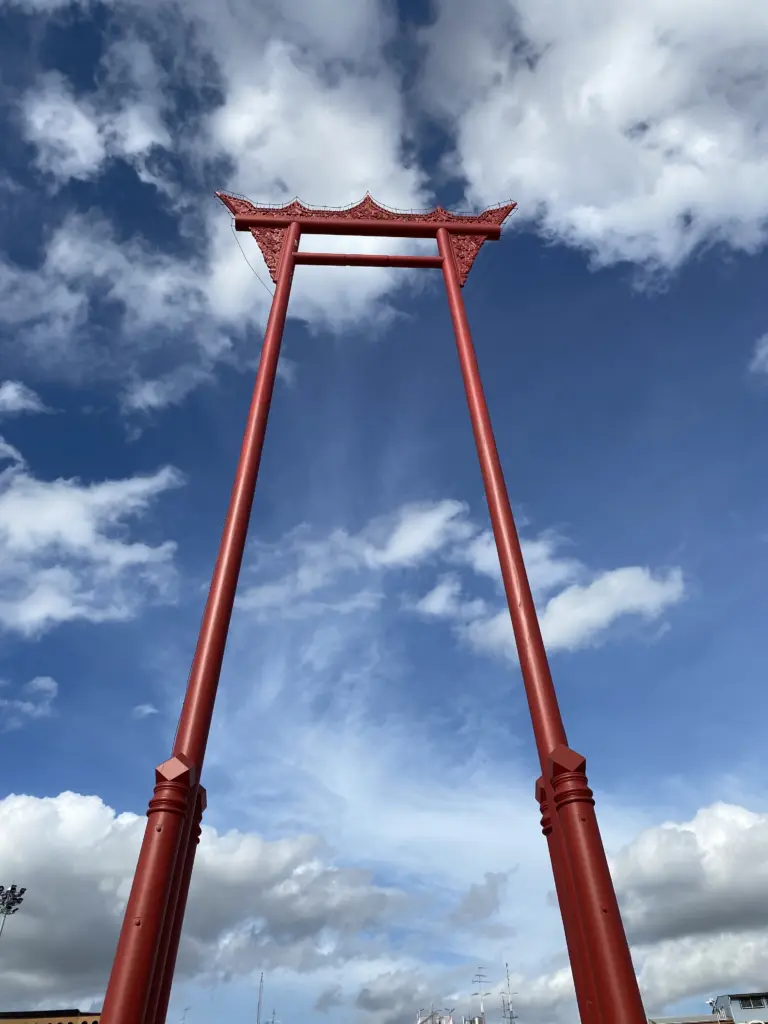
5. Wat Suthat (Temple of the Giant Swing)
The official name is Wat Suthat Thepwararam Ratchaworamahawihanquite a mouthful but it also goes by Wat Suthat for short. Wat Suthat is a centuries-old temple near the Grand Palace.
The construction of Wat Suthat began in 1807 during the reign of King Rama I, but the temple was not completed until the reign of King Rama III in 1847. The temple is one of the largest and most important temples in Bangkok and is home to a number of important Buddhist relics, including a 8 m (25 ft) bronze Buddha statue that was cast in the 14th century.
Perhaps the one thing Wat Suthat is most known for would be its towering red swing, which stands at over 25 m (80 ft) tall. The swing is used in an annual ceremony known as the “Swing Festival,” which dates back to the 18th century and is meant to symbolize the cycle of life and death.
The temple is also home to a meditation hall and it’s the perfect place reflect in peace.
Cost: 20 THB (0.50 USD)
6. Khao San Road
The world-famous street of Bangkok! Khao San Road’s nightlife, street food, and budget-friendly accomodations are legendary amongst backpackers from all over the world.
With a wide variety of restaurants, bars, and street food vendors that offer a range of local and international cuisine at cheap prices, here you can sample everything from pad Thai and green curry to burgers and pizza, plus a variety of drinks and cocktails.
The street is also lined with plenty of bars and nightclubs so as the night goes on, things can get quite rowdy! Make sure to keep an eye on your belongings!
Cost: Free
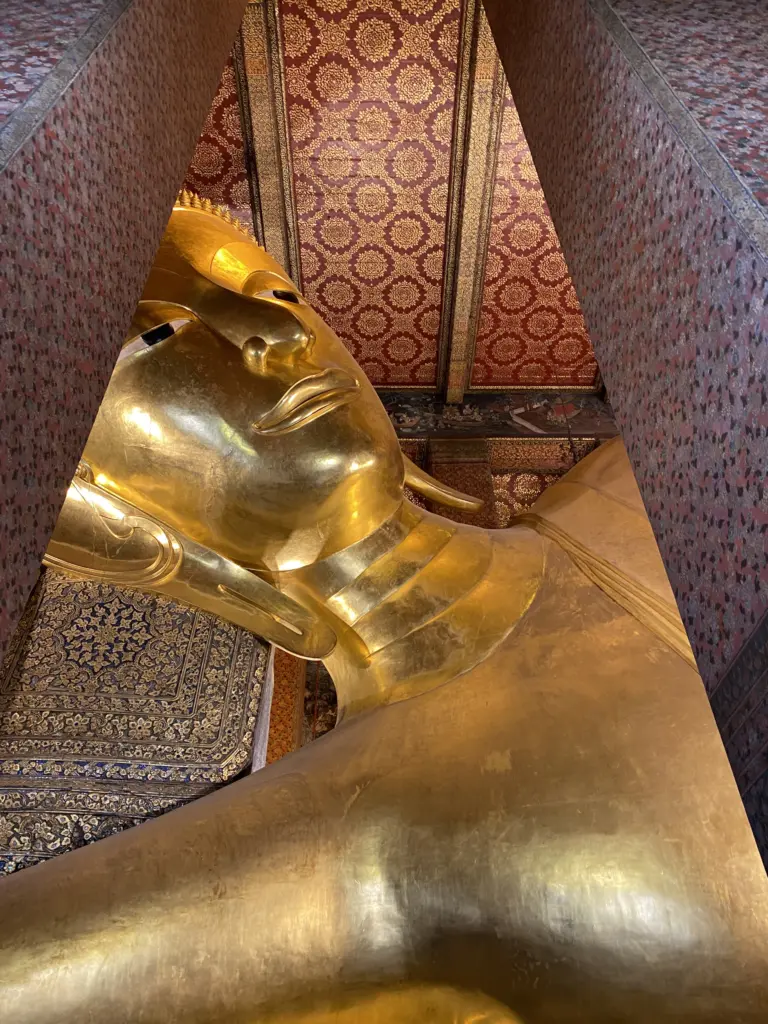
7. Wat Pho (Temple of the Reclining Buddha)
Wat Pho (short for Wat Phra Chetuphon Wimon Mangkhalaram Rajwaramahawihan), also known as the Temple of the Reclining Buddha, is one of the most magnificent temple complex in Bangkok. The Reclining Buddha is just one aspect of it and we actually spent a long time exploring the temple grounds before actually finding the giant Reclining Buddha.
The massive statue measures 46 m (150 ft) long and 15 m (50 ft) high, it’s big but not as big as Yangon’s reclining Buddha.
The statue is covered in gold leaf and features intricate carvings on its feet, which depict the 108 auspicious symbols of Buddha.
Cost: 200 THB (6 USD)
Hidden Gems in Bangkok
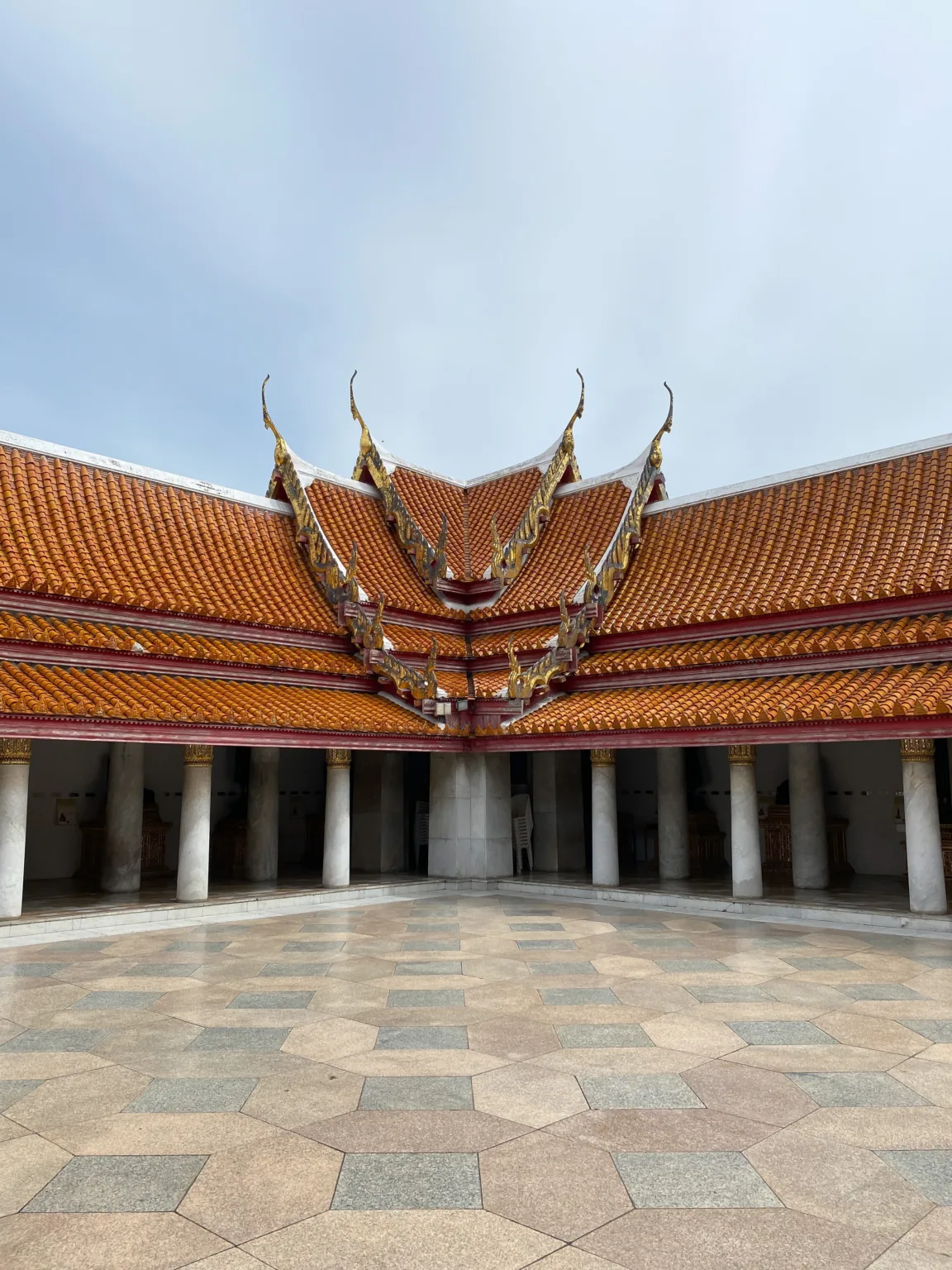
8. Wat Ben (The Marble Temple)
Wat Benchamabophit Dusitwanaram (Wat Ben) is also known as the Marble Temple. Why? Because the temple is coated in white Carrara marble imported from Italy which was used extensively in its construction.
The temple was built during the reign of King Rama V in the late 19th century and is one of the most important temples in Bangkok.
While it’s a bit farther away compared to the other temples, for us it was worth it as both the interior and exterior were nothing short of sublime.
Cost: 50 THB (1.50 USD)
9. Wat Traimit (Temple of the Golden Buddha)
Wat Traimit Withayaram Worawihan is famous for housing one of the largest solid gold Buddha statues in the world. The statue is over 3 m (10 ft) tall and weighs over 5 tons, and is estimated to be worth over $250 million!
The story is really interesting as it was discovered in 1955, when the plaster exterior of the statue was accidentally chipped off during a move to a new temple, revealing the solid gold interior. All this time it was in a temple considered to be of minor significance, can you imagine what it would have been like to make such a discovery?
Cost: 40 THB (1 USD)

10. Wat Saket (The Golden Mountain)
Wat Saket Ratchawora Mahawihan, also known as the Golden Mountain, is a beautiful temple on top of a hill. While you’ll have to climb up a huge number of stairs, the top is well worth it as you’ll be rewarded with panoramic views of the city and the main temple that’s perched on the summit.
Wat Saket is also one of the best places in Bangkok to catch the sunset!
The temple’s main feature is the golden chedi, or stupa, which stands over 80 m (260 ft) tall and is covered in golden tiles.
Cost: 50 THB (1.50 USD)
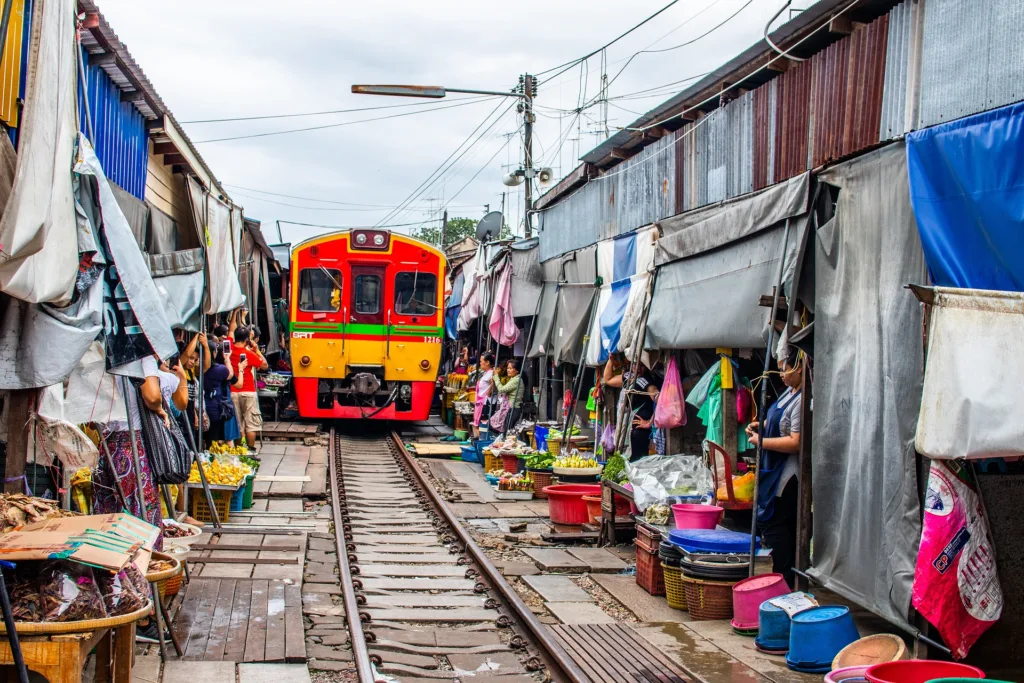
11. Maeklong Railway
If you’re looking for something thrilling, head on to the Maeklong Railway. It’s a bit of a trip from Bangkok but the experience is well worth it, plus you can combine it with the nearby Amphawan Floating Market.
The market is directly on the railway tracks, which are still in use by trains several times a day. When a train approaches, the vendors quickly pack up their goods and retract their umbrellas to make way for the train to pass through! Once the train has passed, the vendors quickly set up their stalls again and business continues as usual. You can see why the Maeklong market is also called the “Umbrella Market.”
If you’re planning a visit to the Maeklong Railway market, be sure to check the train schedule in advance so you can time your visit to see the train pass through the market. You can find how to reach Maeklong as well as Amphawan Floating Market through this blog post.
Cost: Free

12. Amphawan Floating Market
Just a short ride away from Maeklong, Amphawa Floating Market is one of the hidden gems near Bangkok. In reality, most of the floating markets in Bangkok are a very touristy, expensive and some would even consider them as “tourist traps.” If you want a more authentic floating market experience, you can try Amphawan’s Floating Market. This is actually the market where the locals go to for goods.
You can also go for nearby excursions in the area that will take you to several temples via boat. Though I found it to be not up to par especially if you’ve seen the temples in Bangkok. There are also firefly tours here but I would make sure you have transportation planned back to Bangkok before joining those.
You can join a tour that goes to both Maeklong and Amphawan and complete with a firefly river cruise through here.
Cost: Free
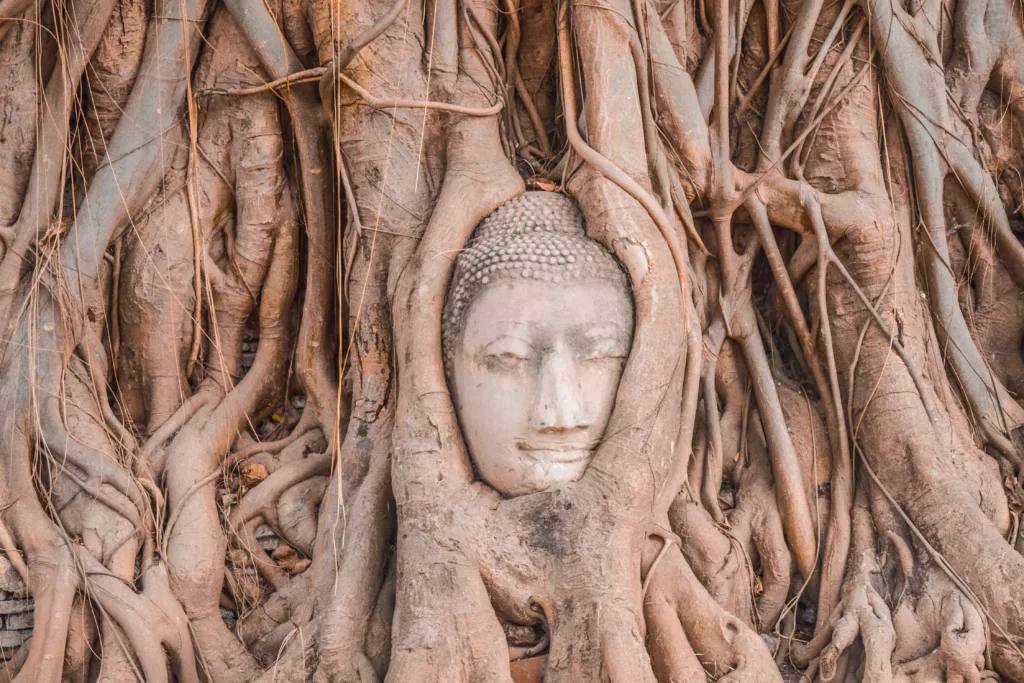
13. Ayutthaya, the Ancient Capital
Ayutthaya was once the capital of the Kingdom of Siam and is now a UNESCO World Heritage Site, known for its beautiful temples and ancient ruins.
The city was founded in the 14th century and served as the capital of Siam for over 400 years until it was destroyed by invading Burmese armies in the 18th century.
Today, the ruins of the ancient city are scattered throughout the modern town of Ayutthaya where you can explore the many historic sites such as the Wat Mahathat, which features a famous Buddha head entwined in the roots of a tree, and the Wat Phra Si Sanphet, which features three towering chedis and is the largest and most important temple in the city.
If you’re interested, you can join a tour to Ayutthaya through here.
Cost: Free, but various temples have different prices ranging from 20 THB – 50 THB (0.5 USD – 1.5 USD)
Top Things to Do in Bangkok
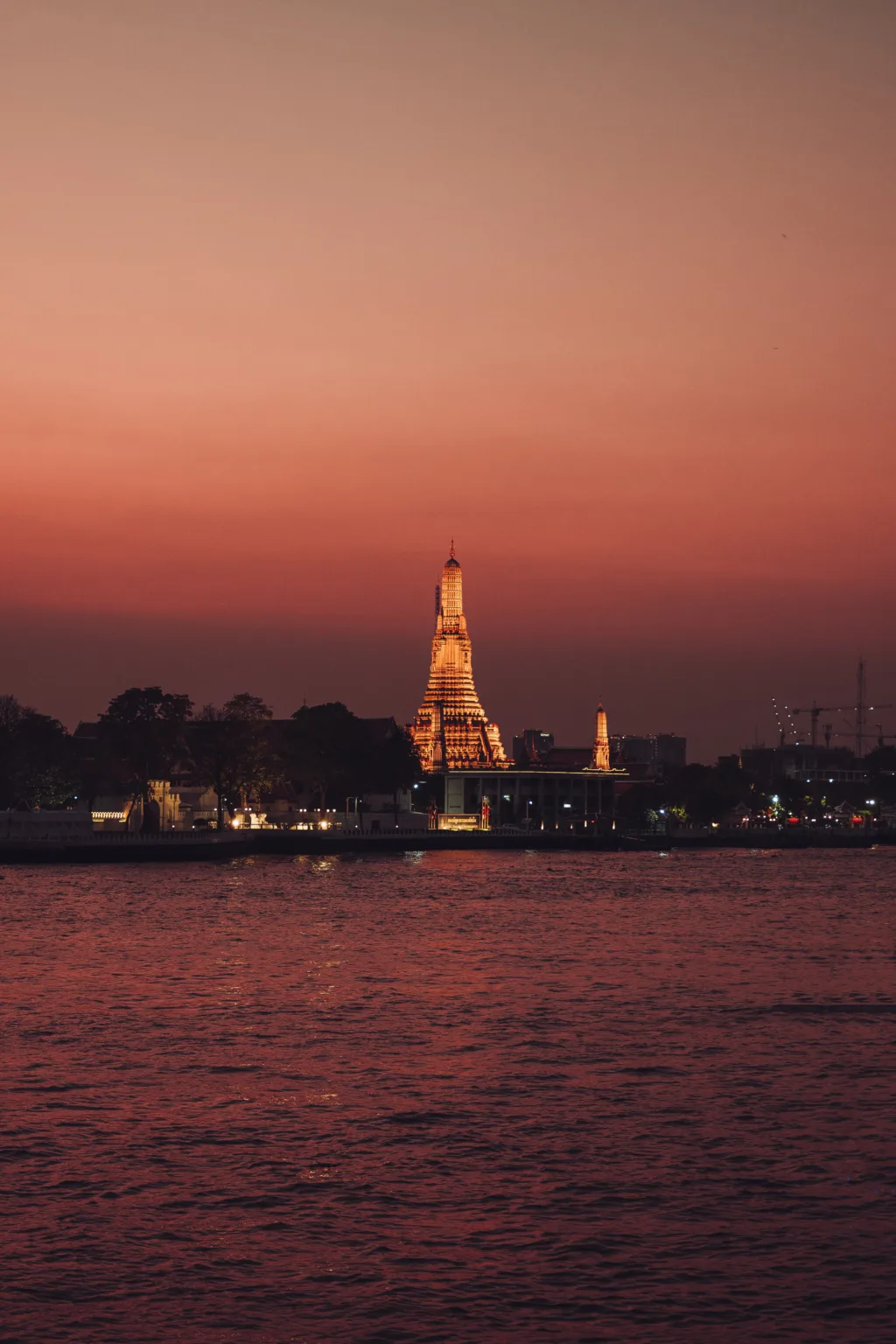
14. Watch the Sunset at ViVi the Coffee Place
ViVi the Coffee Place was a pleasant surprise for us as it was something we stumbled into accidentally. It’s near Wat Arun and is actually one of the best and most affordable place to watch the sunset.
Most rooftop restaurants near the river are a bit expensive but at ViVi’s, you can simply grab a refreshing drink while appreciating the sun setting behind Wat Arun.
15. Experience a Thai Massage
Thai massage would often surprise people as it’s not usually the type of massage that they’re expecting. Think of a massage that’s coupled with some yoga. It combines acupressure, stretching, and deep tissue work to help relieve tension, improve circulation, and promote overall wellness.
The masseuse will be using their hands, feet, elbows, and knees to apply pressure and stretch the body, it’s definitely going to be an interesting experience especially if you’re not flexible!

16. Treat Yourself to Thai Green Curry
I’m a sucker for green curry and it’s one of my favorite Thai dishes. I’m not ashamed to admit that I was pretty much eating it everyday while I was there from Bangkok all the way to Chiang Rai.
Green curry is made with a paste of green chilies, lemongrass, galangal, garlic, shallots, coriander, and other herbs and spices, which are sautéed in oil and then combined with coconut milk, vegetables, and chicken usually.
You have to try it while you’re there though I found it to be a tad bit spicier than the ones I’m used to having here in Japan.
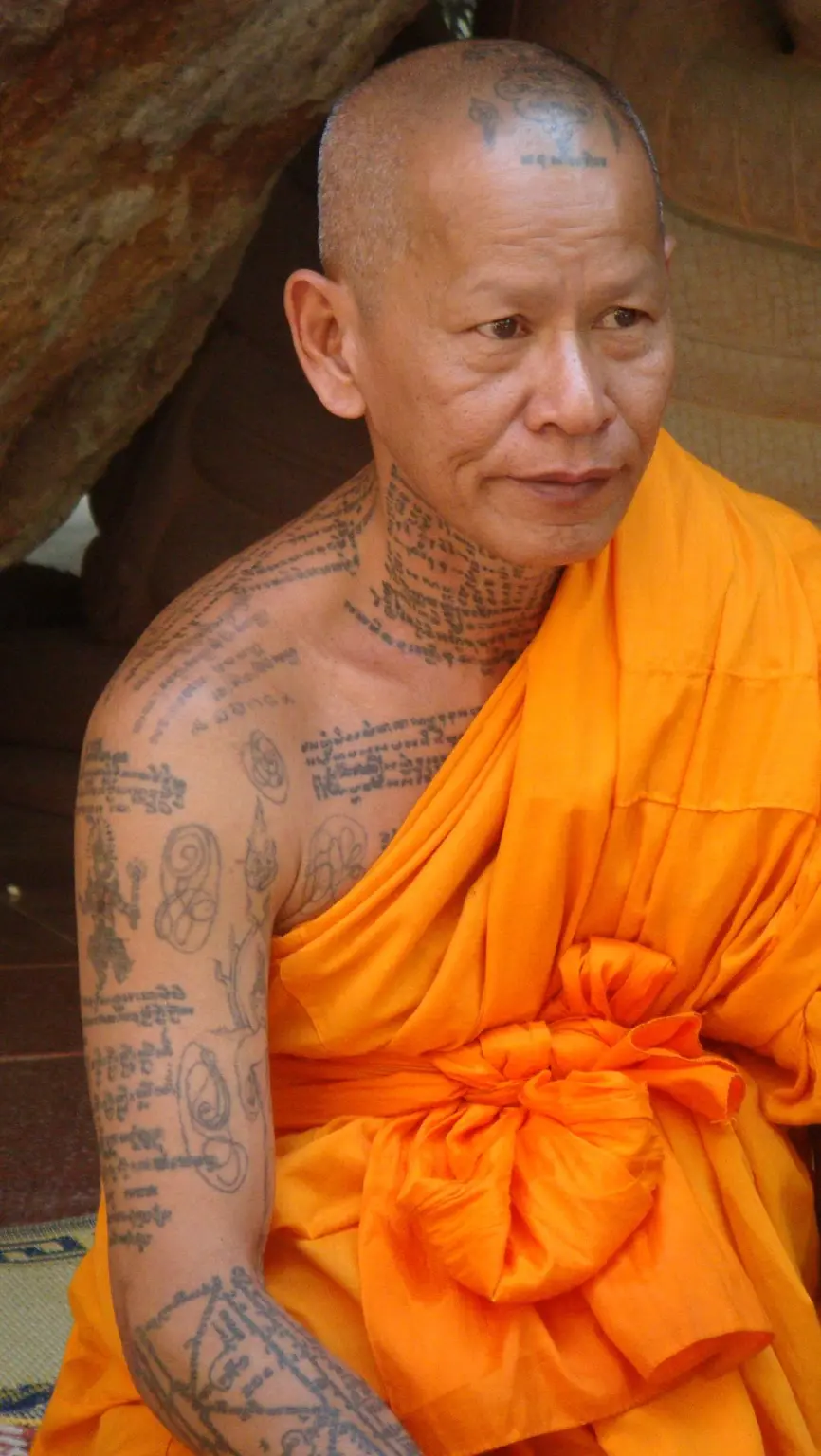
17. Get the Sacred Sak Yant Tattoo
How about getting a holy and sacred tattoo from the monks of Thailand? You heard that right!
When it comes to Bangkok, it’s easy to get lost in a whirlwind of night markets and delectable street food. But tucked away in the serene temples is a captivating spiritual tradition that transcends the ordinary — the art of Sak Yant tattoos.
Sak Yant, also known as Thai ‘Yantra’ tattoos, are an ancient form of tattooing practiced primarily in Southeast Asia. Famed for their intricate geometrical designs, each Sak Yant tattoo is believed to offer protection and good fortune to the wearer.
But getting a Sak Yant isn’t your typical tattoo experience, it’s a true journey into culture and spirituality. If you’re interested, you can join a Sak Yant tattoo experience through here!
I encourage you read more about it with the other link above before going for it.
18. Watch the Khon Dance, a Traditional Thai Dance Drama
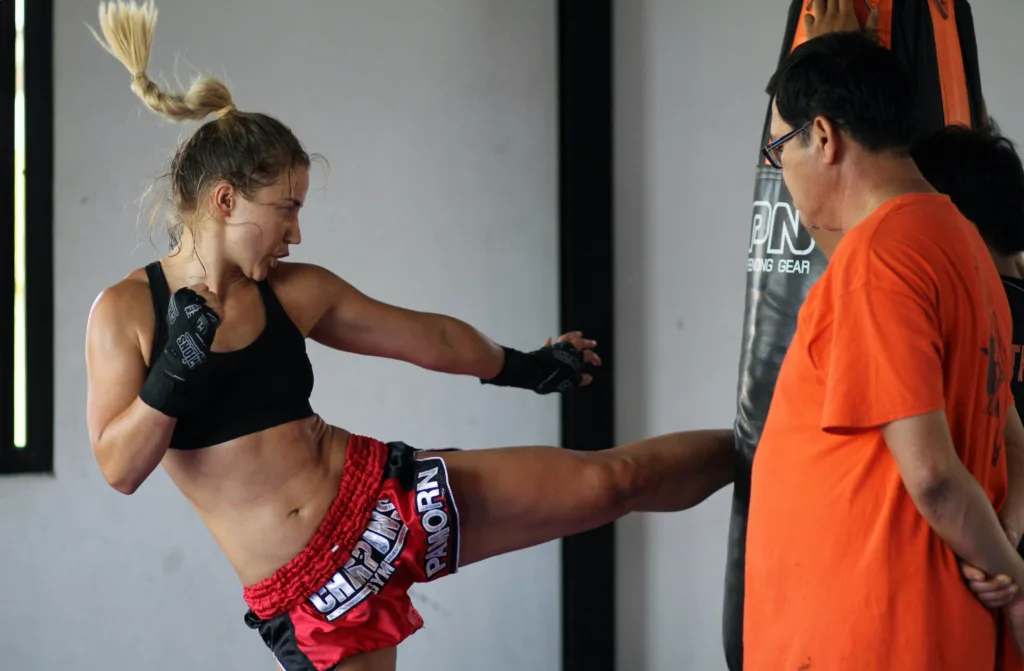
19. Try out Muay Thai
Thai boxing or Muay Thai, is a great way to experience Thailand’s unique martial arts culture. Muay Thai is a combat sport that utilizes a combination of punches, kicks, knee strikes, and elbow strikes, and is known for its intense physical demands and rigorous training regimen.
You can take classes or even sign up for a training camp to learn the techniques of Muay Thai. But if fighting on the right isn’t for you, many Muay Thai gyms also offer opportunities to watch live fights, which can be quite thrilling!
Where to Stay in Bangkok
Bangkok had some of the finest establishments at super affordable prices. We were living like kings and staying in 5-star hotels which was somehow the same price as our capsule hotel in Singapore! Here are just some recommendations on where to stay in Bangkok:
Best Hotels in Bangkok
- Prince Palace Hotel – this is exactly where we stayed in Bangkok and I gotta say, a 5-star hotel for 20 USD ain’t bad at all. There’s also a pool with a skyview that’s perfect for night time dip after a day of exploration. Rooms are a bit old but classic is a better word for it and the bathrooms come with a bath tub too. We had a fridge as well as TV that we never got to use.
- Shangri-La Bangkok – offers a 10,000-square-meter Fitness Center. The hotel has 9 dining options, including an award-winning restaurant, and you can also participate in daily aerobics and dance classes or play tennis. The hotel also features a spa pool, sauna, steam room, shopping arcade, and business center. The rooms are decorated with Thai silk and wood furnishings and offer flat-screen satellite TVs, safety deposit boxes, and mini-bars.
- The Phoenix Hotel Bangkok – if you’re looking for a hotel near to the airport, The Phoenix Hotel is a good choice. This was another hotel I stayed in before heading off to Sri Lanka. The interior is modern and chic with free breakfast and also a very nice pool.
Best Hostels in Bangkok
- Diff Hostel – a modern and comfortable hostel which offers a cozy atmosphere. The hostel provides clean and comfortable shared rooms with high-quality blankets, anti-dust mite mattresses, individual privacy curtains, luggage storage, personal lockers, individual reading lights, USB ports, and universal sockets. Additionally, the hostel also offers private rooms with King beds and private bathrooms, as well as flat-screen TVs.
- Good Day Hostel – awarded the Certificate of Excellence 2016 by Tripadvisor and offers you a “home away from home” experience. Good Day Hostel has a range of room options available, including twin bed, 8-bed, 6-bed, 4-bed mixed and female dormitories, and private rooms upon request. The hostel offers numerous features, including individual reading LED lights, personal electronic sockets, super clean and comfortable anti-dust mite mattresses with freshly cleaned linen, towels, personal lockers, and more.
- Kloem Hostel – a renovated Thai government house built in 1957 that perfectly combines traditional Thai house architecture made of hardwood with modernist design. The hostel is located along the trail of the original Thai train heading to the eastern edge of Thailand, offering breathtaking scenery.
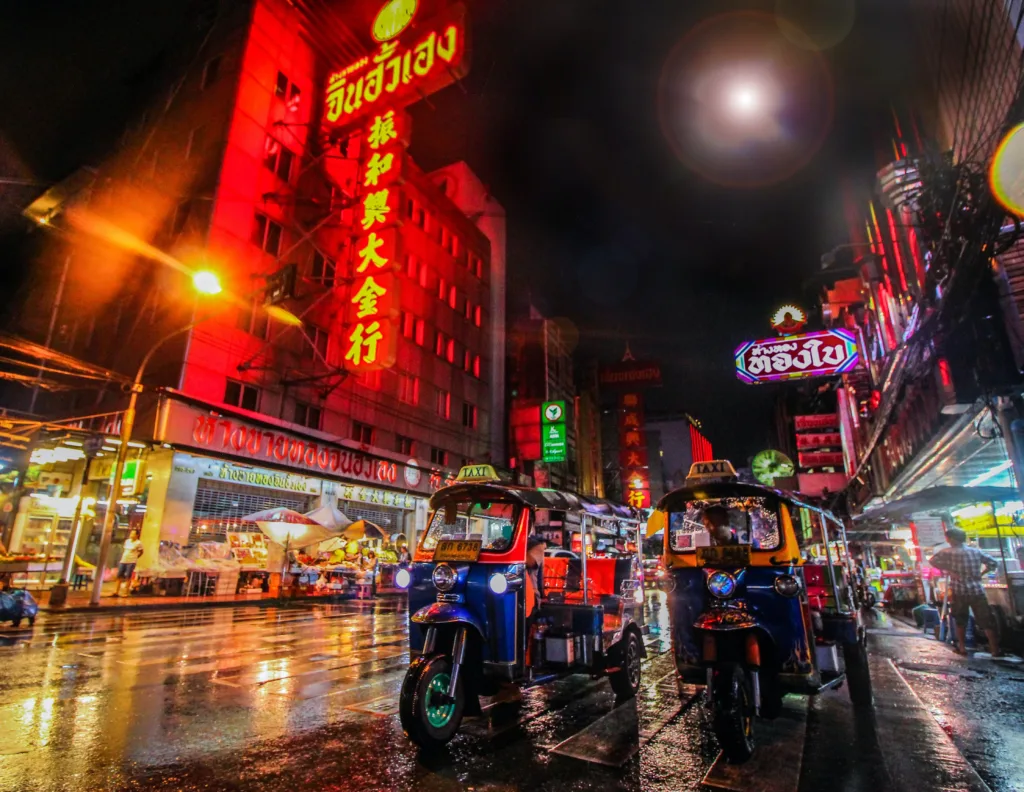
How to Get Around Bangkok
Bangkok is a sprawling city, but fortunately, there are many transportation options available to help you get around. Here are some of the most common ways to get around Bangkok:
- Skytrain: The BTS Skytrain is an elevated train system that runs through the heart of the city, connecting many popular tourist destinations. The trains are air-conditioned and also offer great views of the city. You can purchase a single-trip ticket or a rechargeable card for multiple trips.
- Metro: The MRT Subway is an underground train system that’s also connected to many popular destinations
- Taxis: Taxis are the most popular way to get around Bangkok. Use the Grab app for a seamless transaction, we were using it almost everyday while in Bangkok!
- Tuk-tuks: Tuk-tuks are the iconic way to get around Bangkok, but they can be more expensive than taxis. Make sure to agree on a price before you get on.
- Motorbikes: Motorbike taxis are a quick and affordable way to get around Bangkok, especially in heavy traffic. We used these one quite often as well which helps a lot during rush hour, it can be a bit of a rush just like Hanoi’s scooter waves.
- Buses: Bangkok has an extensive bus network, with both air-conditioned and non-air-conditioned options available.
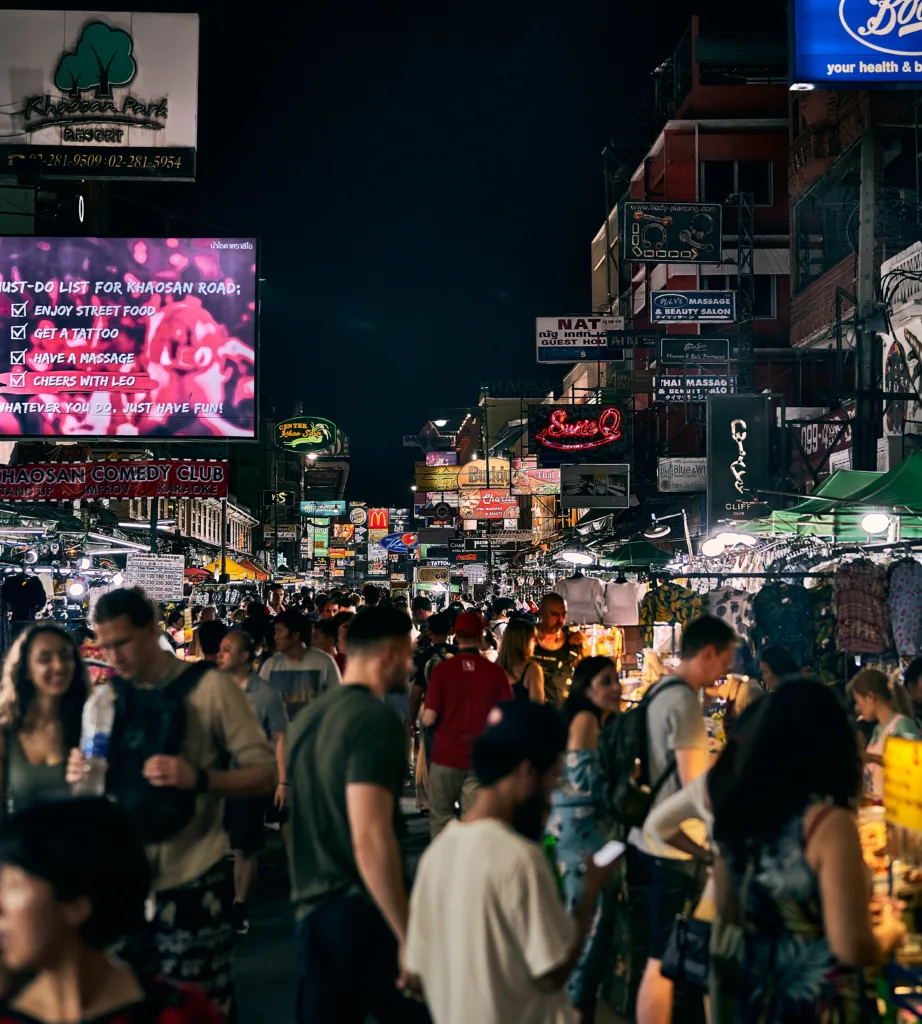
How to Stay Safe in Bangkok
While Bangkok is a generally safe place, the one thing I would be careful of is petty crime such as pickpocketing and theft especially in the crowded tourist areas and markets. It’s unfortunate but we even saw a sign warning of pickpockets right at the building housing the reclining Buddha.
Another thing to watch out for is the party scene and nightlife, there have been plenty of cases of drink spiking and other horrible crimes against women even foreigners, so it’s always best to make sure you are vigilant or with trusted people.
While cannabis may be legal (which was a pleasant surprise for us) there are still limitations and other drugs are still definitely off the table.
One thing I always recommend is to get travel insurance before heading out in case of any emergencies that may arise.
Best Time to Visit Bangkok
The best time to visit Bangkok is usually around the cool season from November to February.
Bangkok has a tropical climate, with hot and humid weather year-round, and three distinct seasons: hot, rainy, and cool.
The hot season runs from March to May, with temperatures averaging around 35°C (95°F) during the day. This is the driest season, with clear skies and plenty of sunshine. However, it can be quite hot and humid.
The rainy season runs from May to October, with temperatures averaging around 30-32°C (86-89°F) during the day. This season brings frequent rain showers and occasional thunderstorms, which can cause flooding in some areas.
The cool season runs from November to February, with temperatures averaging around 25-28°C (77-82°F) during the day. The weather is mild and pleasant, with lower humidity and cool breezes. It is also the peak tourist season, so expect larger crowds and higher prices.
What to Pack For Bangkok
Here are some essential items to consider packing for Bangkok:
- Respectful clothing: Pack clothing that covers your shoulders and knees, especially if you plan to visit temples as they are quite strict about this and you could possible be refused entry.
- Sun protection: The sun can be intense in Southeast Asian countries
- Insect repellent: Mosquitoes are common in Bangkok, especially during the rainy season
- Power adapter: Thailand uses Type A and Type C power outlets
Plan Your Trip to Bangkok | Best Travel Resources
Book Your Accommodations
- Booking.com – the world’s leading online booking platform for accomodations around the world, they have an extensive amount of available listings with zero booking fees and best price guarantees.
- Hostelworld – a backpacker’s best friend, Hostelworld has the largest collection of hostels and guesthouses for affordable prices.
Don’t Forget Insurance
- SafetyWing – from Nomad Insurance, an insurance by nomads for nomads. They understand our lifestyle well and have really comprehensive and flexible plans that cater to any traveler.
Find Cheap Flights
- Kiwi.com – my go-to for booking and finding the cheapest flights and it’s helped me save tons of money. They do virtual interlining which is connecting flights from airlines that do not codeshare, so you can find routes that you wouldn’t be able to find normally.
Join Tours & Activities
- GetYourGuide – is one of the best places to find unique tours and activities. I found that it’s an excellent way to meet fellow travelers and create fond memories. They are not only limited to tours as they also offer niche services such as skip-the-line tickets or private transfers.
Catch a Ride
- Rentalcars.com – nothing beats the freedom of the road, Rentalcars.com is the world’s largest online car rental service. They operate across 160 countries so they’re the perfect partner to work with if you find yourself wanting a ride.

